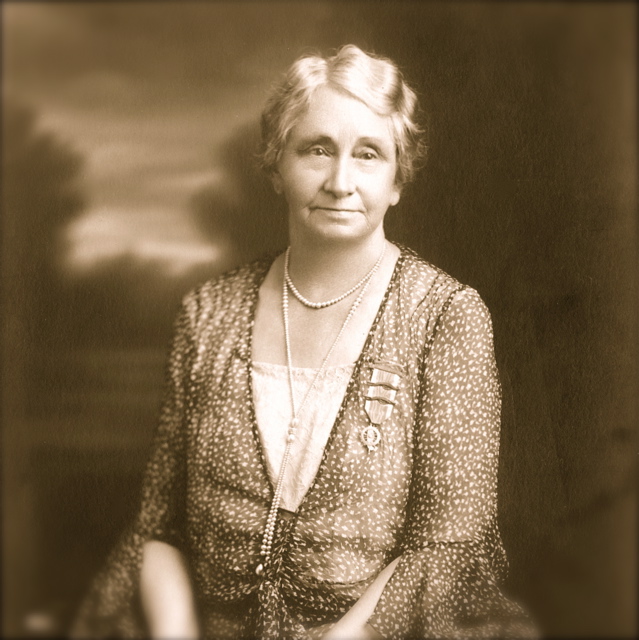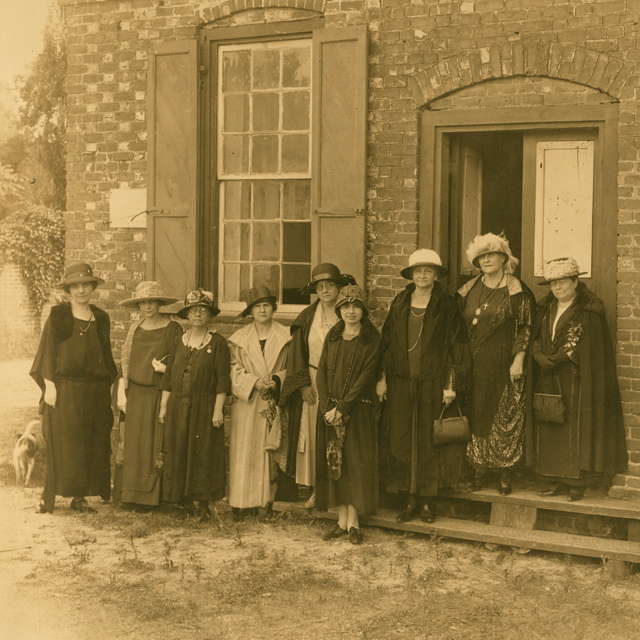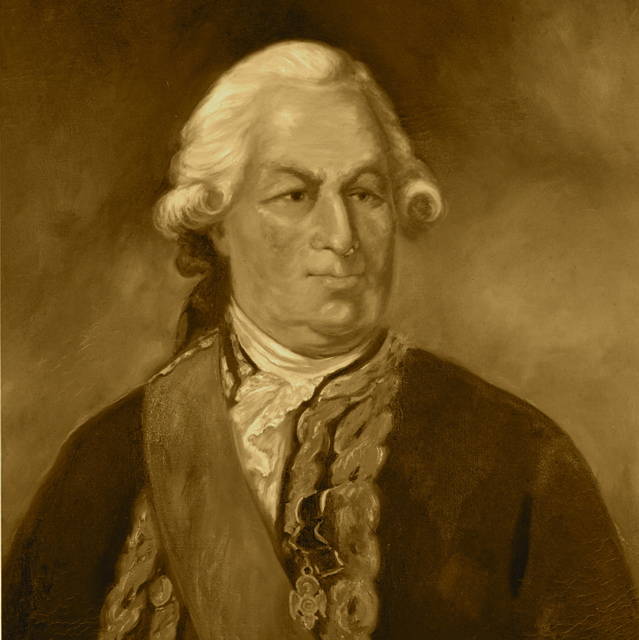Chapter History
Chapter 1
A Yankee in Virginia
 During the hot and dusty summer of 1919, a fifty-eight year old Daughter from New Jersey, arrived in the little community of Yorktown.
During the hot and dusty summer of 1919, a fifty-eight year old Daughter from New Jersey, arrived in the little community of Yorktown.
Relocated south for her husband's new job with the Naval Weapons Station, Emma Leake Chenoweth (right) took up temporary residence in the Yorktown Hotel. Soon, however, she and her husband, George, would move into the Thomas Pate House (now the Cole Digges House) on the corner of Main and Read Streets.
The following summer, Mrs. James T. Morris, Chairman of Historic Spots of the National Society Daughters of the American Revolution, came to Yorktown.
Earlier that year, NSDAR had passed a resolution to gather signatures on a petition to preserve the Yorktown Battlefields. While developers in Yorktown were considering a resort hotel and expanded golf course on the site of the historic surrender of British troops to General George Washington, the ladies in Washington, D.C. were rallying their own troops. Mrs. Morris, leading the charge as the only female member of the commission appointed by the Secretary of War, was making recommendations to establish a National Park on the site.
 Mrs. Morris paid a visit to her fellow Daughter, Mrs. Chenoweth (left); and what began as an overnight visit turned into a two-week stay. Upon her return to Washington, Mrs. Morris pressed upon Mrs. Chenoweth to consider forming a chapter in Yorktown, the location of the end of the American Revolution.
Mrs. Morris paid a visit to her fellow Daughter, Mrs. Chenoweth (left); and what began as an overnight visit turned into a two-week stay. Upon her return to Washington, Mrs. Morris pressed upon Mrs. Chenoweth to consider forming a chapter in Yorktown, the location of the end of the American Revolution.
"She put forth in very plain terms the solemn duty owed both the people of Yorktown and the Society of DAR as a daughter of over twenty-five years standing, in engaging in the work," wrote Mrs. Chenoweth.
 Still soliciting support for the National Park, Mrs. Morris returned to Yorktown in 1921, with an entourage of distinguished Daughters, including President General Mrs. George Maynard Minor and Virginia State Regent Mrs. Kate Waller Barrett. Again, the pleas for a chapter in historic Yorktown were extended to Mrs. Chenoweth via a letter, as she was out of town during their visit.
Still soliciting support for the National Park, Mrs. Morris returned to Yorktown in 1921, with an entourage of distinguished Daughters, including President General Mrs. George Maynard Minor and Virginia State Regent Mrs. Kate Waller Barrett. Again, the pleas for a chapter in historic Yorktown were extended to Mrs. Chenoweth via a letter, as she was out of town during their visit.
"Yorktown, of all places in the State, should have plenty of good material, and now the National Society is working up on the fortifications," wrote Virginia State Vice Regent Mrs. James Reese Schick. "It may inspire interest in the organization. Please let me hear from you whether you will undertake the work or not."
"After considering the matter for some time and the urgent request of the National Officers, it appears my duty to take up the work of organizing a chapter in Yorktown," wrote Mrs. Chenoweth.
The issue was settled.
 However another one soon arose. Old Yorktown Chapter was the selected name for the group, but, NSDAR reported a chapter in Pennsylvania already had that name. Mrs. Chenoweth then suggested the name Comte de Grasse, after her favorite Revolutionary War Hero, Admiral Francois Joseph Paul Marquis de Grasse-Tilly, (left) who commanded the French Fleet during the Battle of the Chesapeake. Mrs. Chenoweth referred to him as "the forgotten man" and felt he did not receive the recognition he deserved.
However another one soon arose. Old Yorktown Chapter was the selected name for the group, but, NSDAR reported a chapter in Pennsylvania already had that name. Mrs. Chenoweth then suggested the name Comte de Grasse, after her favorite Revolutionary War Hero, Admiral Francois Joseph Paul Marquis de Grasse-Tilly, (left) who commanded the French Fleet during the Battle of the Chesapeake. Mrs. Chenoweth referred to him as "the forgotten man" and felt he did not receive the recognition he deserved.
"On the first Friday in February of 1922, the Comte de Grasse Chapter was organized at the Yorktown Hotel with Mrs. Kate Waller Barrett, our State Regent, present. The following officers were elected: Mrs. Chenoweth, Regent; Mrs. Renforth, Vice Regent; Mrs. Catchings, Recording Secretary; Mrs. B.P. Smith, Corresponding Secretary; Mrs. Sydney Smith, Historian," wrote Mrs. Chenoweth.
The remaining months of 1922 were busy for the chapter, as they were to host a state conference, take the reins on an annual celebration, and rescue an historic building.
Next Chapter: Chapter 2 A History Lesson
